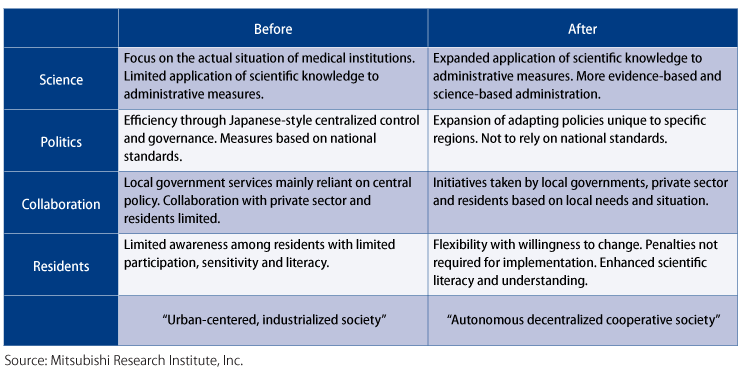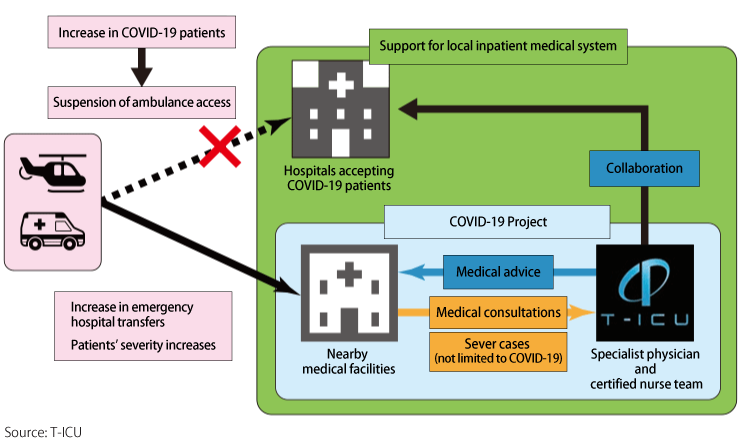The present corona crisis has suggested how to deal with historic junctures and difficult situations for which our past experiences have not been helpful. An autonomous decentralized cooperative society will be able to devise and implement more flexible, rapid, and effective solutions than a centralized hierarchical society. The pivot is not bestowed from the center (i.e., the state) but it requires actions on the part of its members (Table).
First, we need to reconsider the division of roles between the central and local governments. While the central government carries out organization and consolidation of holistic scientific knowledge, it should actively push for transfer of authority and financial resources to local governments depending on the area. This will enhance their autonomy. Digitalization and the evolution of advanced science and technology have lowered the costs necessary to locally solve regional issues and made it possible for local governments to deal with them.
Second, local governments, regardless of whether the population concerned is in rural or urban areas, need to engage necessary local actors in policy-making.*5 This will lead to “autonomous” decision-making and policy enforcement. These actors could be startup firms or universities or research institutes wishing to contribute to the society with their research results.
Third, companies should use the post-corona period as an opportunity to review and reconsider how they carry out their business including conventional centralization, working styles characterized by set office hours, solitary supply chains and other organizational management structures as well as the office locations. This exercise will revolutionize not only the sustainability of their business in times of emergency, but its efficiency in normal times as well.
Fourth, the residents should select their governors and councilors who can think about the future and strengths of the local communities, and judge and act independently. We have seen significant differences among governors in their attitude and actions toward the current COVID-19 situation. The residents should also enhance their sensitivity and literacy about local issues and not be afraid of change.
The autonomous decentralized cooperative society in the post-corona era is a major opportunity for Japan’s regional communities, and will be time for industry, government, academia, and citizens to work to create and co-create our future. We, MRI will utilize the Platinum Society Research Association and the Innovation Network for Co-creating the Future (INCF) (MRI acts as their secretariats), and continue to our active facilitation to create an autonomous decentralized cooperative society though initiatives such as the optimization of multiple policies for local communities, the implementation of regional pilot projects, and the expansion of partnerships among industry, governments, academia, and the private sector.
Table: Various Changes Before and After COVID-19



